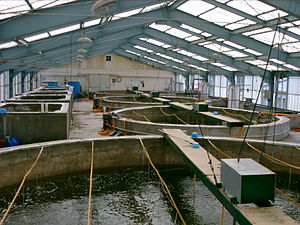What are fisheries? Fisheries are programs set up by the federal government to help maintain sustainable levels of certain fish populations to make up for human impacts such as over fishing, loss of habitat, damning of rivers and other harmful practices. The sustained amount of fish is important in maintaining a balanced ecosystem and the ability for people to practice activities such as fishing. Hatcheries are set up along a water way and hatch, raise, and release a certain number of fish according to what hatchery managers deem a sustainable number.
Attached below is a PBS video that throughly explains what fisheries and hatcheries are and what their purpose is.









